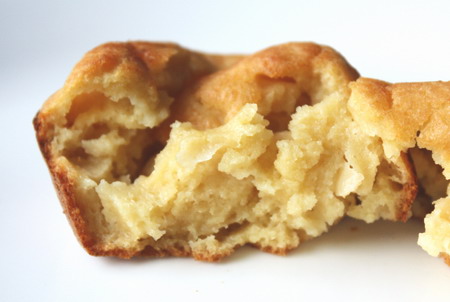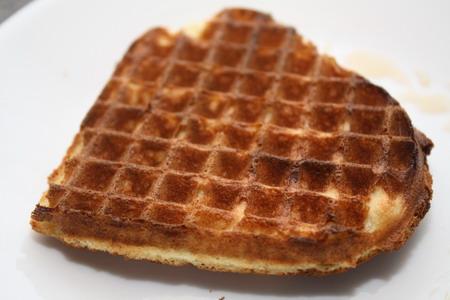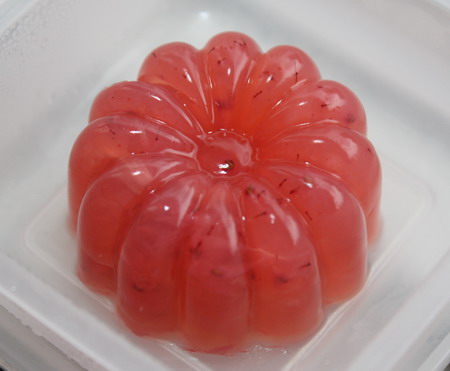
improvised gluten-free pear muffins
I remember the time when I was really scared to start gluten-free baking because it seemed so complicated, so many types of flour, so easy for things to go wrong, for the baking to fail. A couple of weeks ago, I baked some muffins (if you can call them that) without following any gluten-free recipe book and amazingly, the product was edible!
All I did was to try a direct substition of wheat flour with a gluten-free flour blend in my original basic muffin recipe. Yes, the very first basic muffin recipe, which I subsequently stopped using when I found basic recipe no. 2 gave better results. Basic muffin recipe no. 1 is so easy that you can easily by heart:
2 cups flour
1 cup milk/liquid
1/4 cup oil/butter
1 egg (2 , if you prefer)
1 tsp baking powder
other ingredients of choice – e.g. 1 chopped apple, handful of nuts/dried fruit etc.
I used exactly those quantities together with a few large chunks of tinned pears, and made up the 1 cup liquid with half milk and half pear juice from the tin. Apart from the pears and pear juice, no added sugar. (If you are avoiding salicylates, remember to choose pears in syrup as commercial pear juice contains the peel which has salicylates. Of course if you are on an anti-candida diet, the syrup is probably worse!)
The gluten-free flour blend is the one I described earlier:
8oz/225g brown rice flour
8oz/225g tapioca starch
8oz/225g soy flour
No xanthan gum, no gelatine.
The batter was extremely wet, but I decided to go ahead without adding extra flour. The consistency (and eventual effect) reminded on a crazy improvisation attempt when I dumped a load of mashed pumpkin into a gluten-free sponge cake recipe, thereby completely altering the ratio of liquid to other ingredients — a crazy attempt which I did not blog about because I can’t even remember exactly what I did (brain must have gone on strike, hence giving rise to the mad improvisation to begin with); started out being utterly disappointed with the result and subsequently very pleased when put aside my preconceptions and realised the texture was quite appealing and the taste pretty good.
The result:
It looked beautiful at the end of baking, but collapsed as it cooled after coming out of the oven, just as this gluten-free bean bread did. I’ve discovered the quick bread gluten-free recipe that doesn’t sink is this one that uses gelatine as well.
Taste-wise, I was very pleased although visitors to my home who tasted a bite responded only with a grimace masquerading as a polite smile :). Texture-wise, I’ll repeat what I’ve said in my other gluten-free baking entries; it reminds me of Southeast Asian kueh or steamed cakes, soft and very close-textured, no ‘crumb’, kind of squishy.
The overall effect of the non-wheat taste and texture is certainly very reminiscent of local desserts, so perhaps if I dropped names like ‘muffin’ or ‘cake’ and called it kueh, people would have different expectations and not react so negatively towards my gluten-free baking!
Filed under: anti-candida diet, Asian snacks, baking, food culture, food intolerance, gluten-free, recipes, Southeast Asian, sugar-free, wheat-free | Tagged: baking, brown rice flour, cake, gluten-free, kueh, muffin, pear, pears, recipe, salicylates, soy flour, soya flour, tapioca flour, tapioca starch | 2 Comments »





